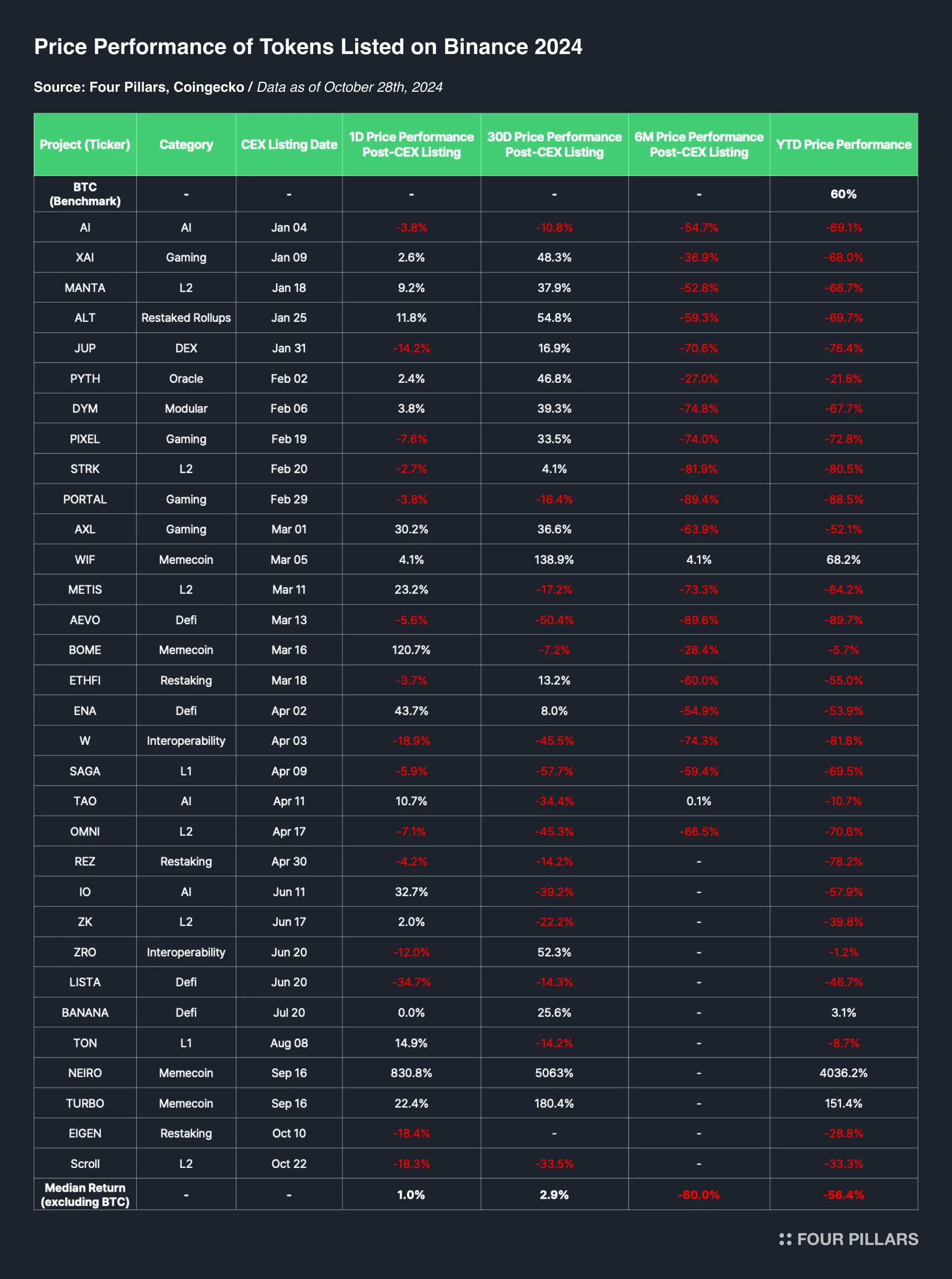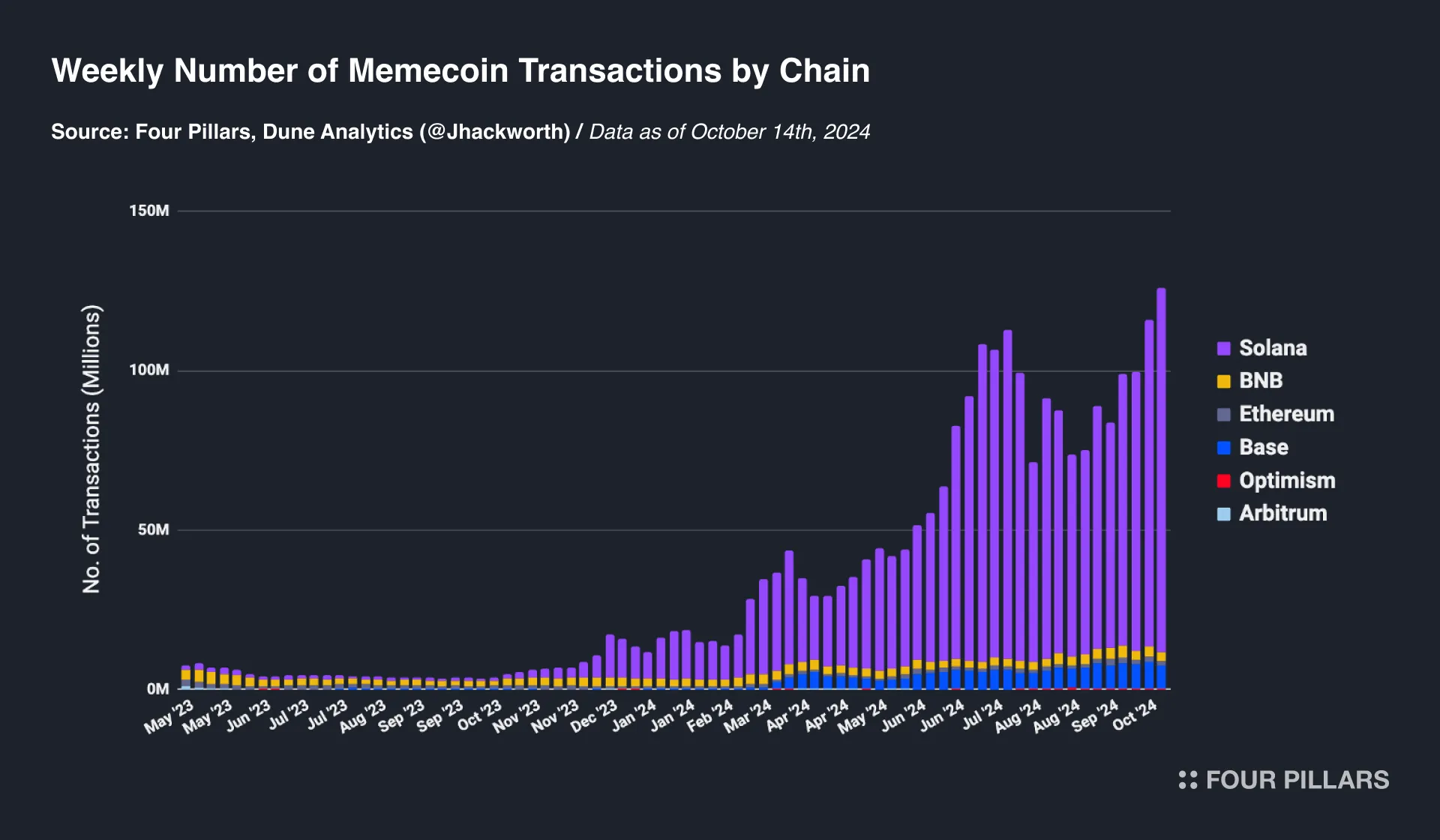In the cryptocurrency market, the belief that a “Tier 1 exchange listing = token price increase” still holds sway. Listings on major exchanges are seen as essential milestones for projects due to the vast user base and ample liquidity these platforms provide. Naturally, token holders also perceive these listings as significant upside opportunities. This notion explains why many projects are willing to pay substantial listing fees to be featured on top exchanges.
According to the PVP article by Arthur Hayes, former CEO of BitMEX and current CIO of Maelstrom, projects aiming to list on Binance may have to prepare a maximum payment that includes 16% of their total token supply and approximately $5 million worth of $BNB tokens for staking on the BNB network. Other Tier 1 exchanges are reported to require a listing fee of up to $2 million, though this amount can vary based on the exchange's rating and evaluation criteria.
Despite these eye-popping costs, recent analysis of tokens listed on Binance reveals that the anticipated price boost following a listing has often fallen short of market expectations. While part of this may be attributed to Binance’s market share decline—from 65% at the start of 2023 to 38% as of September 2024, it also reflects the overall diminishing influence of centralized exchanges in the market. Below is a table listing tokens that were added to Binance in 2024, alongside their respective price changes over time.

As of October 28, 2024, Binance has listed a total of 32 tokens, spanning categories like L2, DeFi, gaming, restaking, memecoins, and AI. However, the overall performance has been lackluster. The median price increases for these tokens after listing stand at 1.0% after 1 day, 2.9% after 30 days, -60.0% after 6 months, and -56.4% year-to-date (YTD). The percentage of tokens yielding positive returns during each period is 53.1% after 1 day, 50.0% after 30 days, 9.5% after 6 months, and only 12.5% YTD.
With the exception of memecoins and $BANANA, no token outperformed Bitcoin’s YTD return of 60%, and most exhibited double-digit negative returns. This contrasts sharply with the traditional assets in the same period, as the Dow Jones, S&P 500, Nasdaq, and gold rose by 12.4%, 22.8%, 25.7%, and 36.0%, respectively. This suggests that holding tokens post-Binance listing may have resulted in significantly lower returns compared to Bitcoin, U.S. stocks, or gold.
These findings also highlight an extreme market preference for memecoins, alongside a general aversion toward altcoins. More importantly, they indicate that, from a long-term perspective, a Tier 1 exchange listing does not directly correlate with sustained token price appreciation.
Meanwhile, decentralized exchanges (DEXs) are increasingly encroaching on the dominance of centralized exchanges (CEXs). Six years since the debut of Uniswap, the market share of DEXs in terms of spot trading volume has steadily risen, reaching around 15% as of October 28, 2024. While growth in the futures trading market has been relatively slower for DEXs, it is also showing a gradual upward trend. This development suggests that CEX dominance may continue to wane over time.

Several factors are driving this increase in DEX market share. High-quality services such as Jupiter, Hyperliquid, Aerodrome, and dYdX have emerged, while the security and UX/UI of self-custody wallets have improved significantly. Additionally, the introduction of on/off-ramp features and technologies like Account Abstraction (AA) and Chain Abstraction (CA) have made on-chain transactions increasingly accessible. Infrastructure advancements, such as interoperability protocols, have also contributed as key enablers. With continued technological progress, the convenience of on-chain trading is expected to eventually rival that of off-chain transactions. However, technological advancements alone face inherent limits when it comes to onboarding the broader user base less familiar with on-chain activities, and a substantial catalyst will be required to overcome this barrier.
In pursuit of broader adoption, many projects have tried to popularize crypto through DeFi, NFTs, gaming, and other content. However, these efforts have seen limited success in truly capturing the mainstream audience. In contrast, the memecoin market, which has shown explosive growth over the past year, presents a promising pathway, potentially serving as a bridge that channels speculative demand to drive user engagement in on-chain activities.
Indeed, the memecoin market has witnessed phenomenal growth over the past year. As of late October 2024, the cumulative weekly trading volume of memecoins has reached $19 billion, with trading frequency totaling 125 million transactions. Phantom, a leading wallet on the Solana chain, has underscored its popularity by surpassing PayPal in May to rank second in the Google Play Store's finance app category and by achieving tens of millions of downloads on the platform.

Critics have voiced concerns about the potentially negative impacts of memecoins on the crypto industry, and there is some merit to these criticisms. Nevertheless, it is undeniable that memecoins have played a pivotal role in attracting new users and promoting on-chain activities. Their extreme volatility taps into primal instincts, and the unique meme-based appeal resonates with the public, providing even inexperienced users with a strong motivation to explore the on-chain world.
As Elon Musk often remarks, “the most entertaining outcome is the most likely.” Few would have predicted that a market rooted in playful speculation would not only survive but drive industry transformation and potentially become a spearhead for mainstream crypto adoption.
Related Articles, News, Tweets etc. :